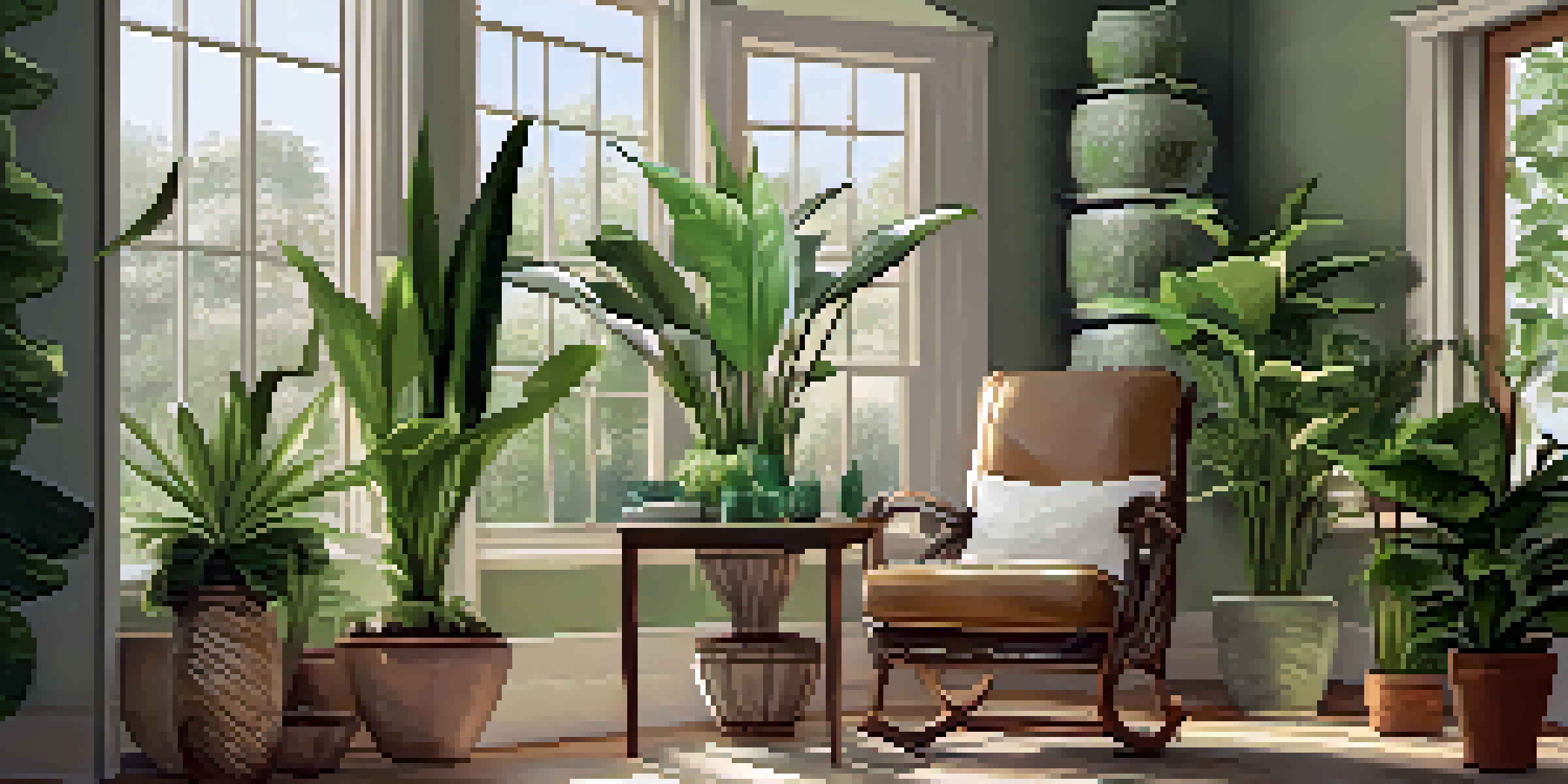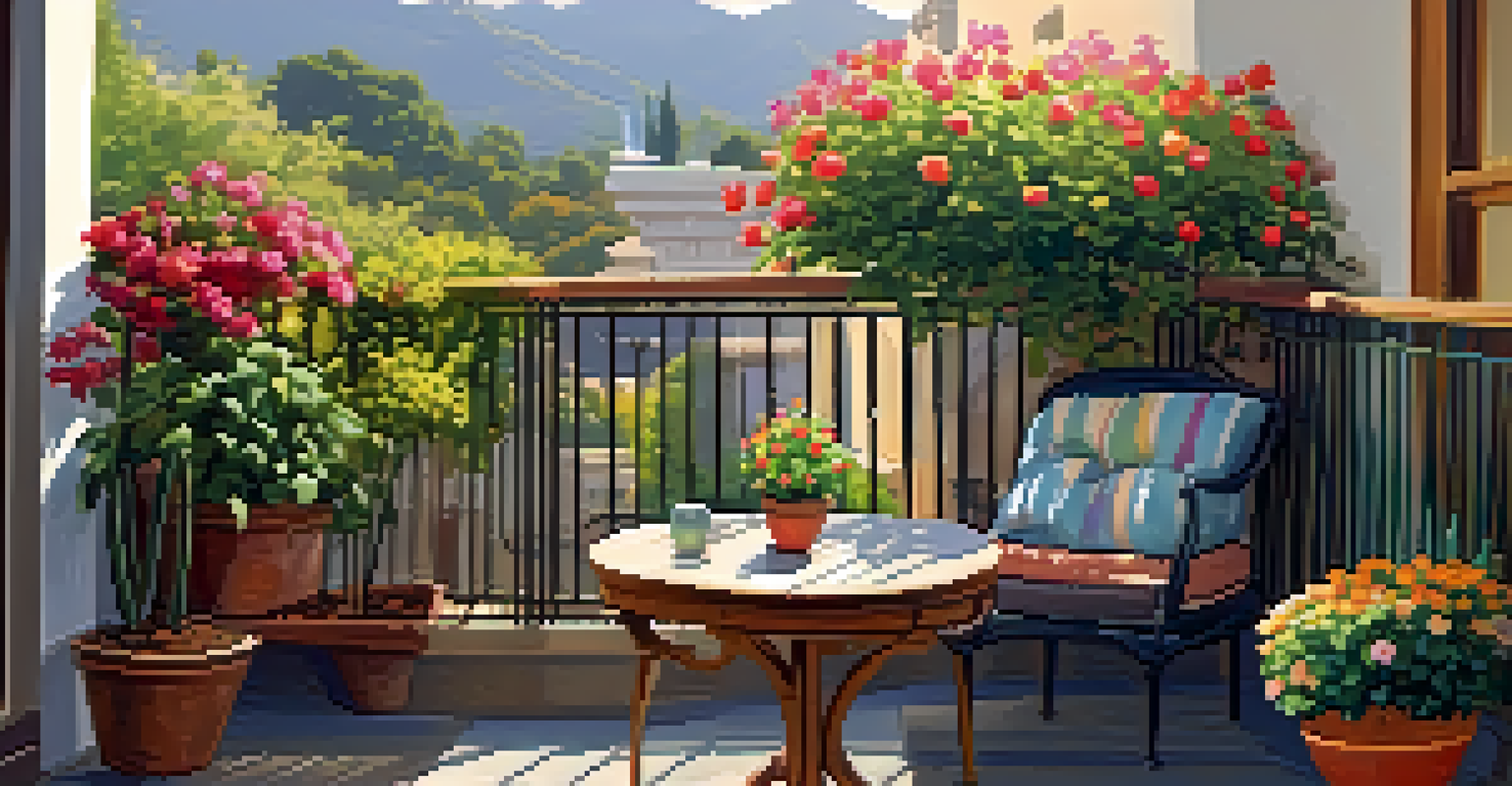Creating a Plant Sanctuary: A Retreat for the Mind

The Importance of a Plant Sanctuary for Mental Health
In today’s fast-paced world, mental health has become a top priority for many. Creating a plant sanctuary offers a peaceful retreat where stress can melt away. Surrounded by greenery, you can find solace and rejuvenate your mind, much like a mini-vacation at home.
The greatest gift of the garden is the restoration of the five senses.
Plants not only enhance our living spaces but also contribute positively to our mental state. Research shows that being around nature can reduce anxiety and improve mood. Imagine the calming effect of lush foliage and vibrant flowers enveloping you in a gentle embrace.
By dedicating a space to plants, you’re not just nurturing them, but also caring for your own well-being. This sanctuary becomes a personal haven where you can unwind, reflect, and recharge. It’s an investment in both your environment and your mind.
Choosing the Right Space for Your Plant Sanctuary
The first step in creating your sanctuary is selecting the right space. Look for an area in your home that feels peaceful and inviting, like a corner of your living room or a sunny balcony. This spot should resonate with you, making it a place where you want to spend time.

Consider the amount of natural light available, as different plants have varying light requirements. For instance, succulents thrive in bright light, while ferns prefer shadier spots. Choose a location that meets the needs of the plants you love to create a thriving ecosystem.
Plant Sanctuaries Boost Mental Health
Creating a plant sanctuary provides a peaceful retreat that reduces stress and enhances overall well-being.
Don’t forget about accessibility! Your sanctuary should be a place you can easily reach and enjoy. This makes it easier to care for your plants and allows you to spend more time in your retreat, soaking in the tranquility it offers.
Selecting Plants that Promote Relaxation
When it comes to choosing plants, opt for varieties known for their calming effects. Lavender, for example, is famous for its soothing scent and is often used to reduce stress. Incorporating these plants into your sanctuary can enhance the overall atmosphere.
Gardening adds years to your life and life to your years.
Additionally, consider plants with lush green foliage, such as snake plants or peace lilies. These plants not only purify the air but also create a serene environment that promotes relaxation. The sight of greenery alone can evoke a sense of peace and comfort.
Don’t hesitate to mix and match different types of plants! A diverse collection can create a dynamic and inviting space. Just remember to maintain a balance between aesthetics and care requirements to keep your sanctuary thriving.
Designing the Layout of Your Sanctuary
Once you’ve selected your plants, it’s time to arrange them in a way that feels harmonious. Consider using varying heights and textures to create visual interest. For instance, place taller plants like fiddle leaf figs at the back and smaller ones like succulents in the front.
Use decorative pots to add personality to your sanctuary. Colorful or textured pots can act as a focal point, complementing the greenery around them. This not only enhances the space but also reflects your personal style.
Choose Plants for Relaxation
Selecting calming plants like lavender and peace lilies can enhance the serene atmosphere of your sanctuary.
Finally, don’t forget about seating! Adding a comfortable chair or cushion allows you to sit back, relax, and truly enjoy your plant sanctuary. This space should invite you to linger, providing a perfect spot for meditation or simply enjoying the serene surroundings.
Incorporating Natural Elements into Your Sanctuary
To amplify the calming effects of your plant sanctuary, consider adding natural elements. Incorporate stones, wood, or even water features to create a more organic feel. These elements can evoke a sense of grounding and connection to the earth.
For example, a small water fountain can introduce soothing sounds, further enhancing relaxation. The gentle trickle of water can help drown out distracting noise, creating a peaceful backdrop for your sanctuary.
Additionally, using natural materials for furniture or decor can help maintain that earthy vibe. Bamboo chairs or wooden shelves can seamlessly blend with your plants, reinforcing the idea of a cohesive, natural retreat.
Creating a Routine to Enjoy Your Sanctuary
Establishing a routine around your plant sanctuary can deepen your connection to this space. Consider dedicating a few minutes each day to tend to your plants or simply to sit and enjoy their presence. This ritual can become a refreshing break from your day-to-day activities.
You might also incorporate mindfulness practices, like meditation or journaling, into your time spent in this sanctuary. These activities can help clear your mind and enhance the calming effects of your green retreat.
Establish a Care Routine
Regularly tending to your plants and engaging in mindfulness practices can deepen your connection to your sanctuary and improve mental clarity.
Over time, as you nurture your plants and engage with your sanctuary, you’ll likely notice an improvement in your mental clarity and overall well-being. This dedicated time for yourself can become a cherished part of your daily routine.
Embracing the Journey of Plant Care
Caring for plants is a journey filled with learning and growth—much like our own lives. As you tend to your sanctuary, you’ll discover the joys and challenges of plant care. This process can teach you patience and resilience, qualities that can enhance your mental well-being.
Don’t be discouraged by setbacks; every plant owner has faced challenges. Whether it’s a wilting leaf or an unexpected pest, these moments are opportunities for growth. Embrace them as part of the journey, and remember that even the most experienced gardeners have had their fair share of learning moments.

Ultimately, your plant sanctuary is more than just a collection of greenery; it’s a reflection of your personal growth and a space for self-care. As you nurture your plants, you’ll also be nurturing yourself, making this retreat a vital part of your mental health journey.